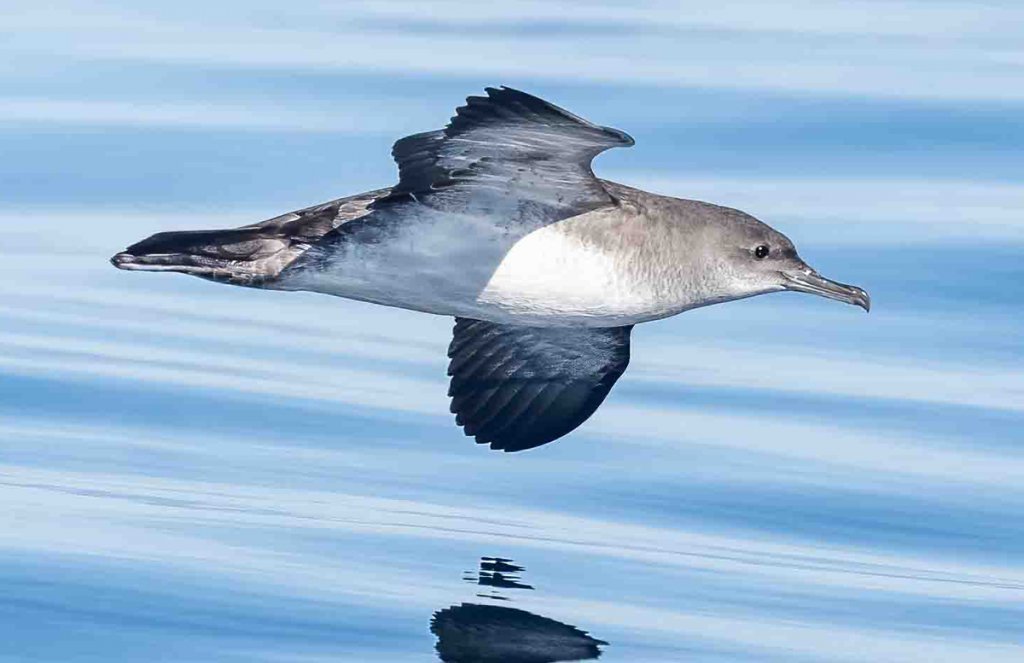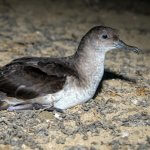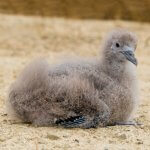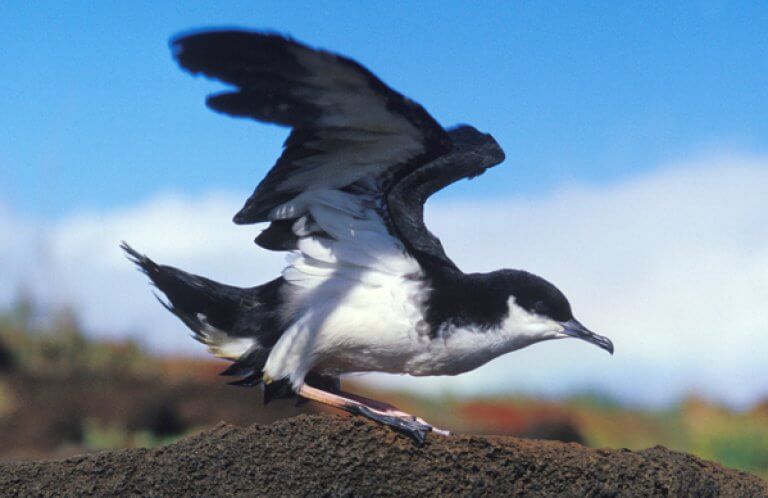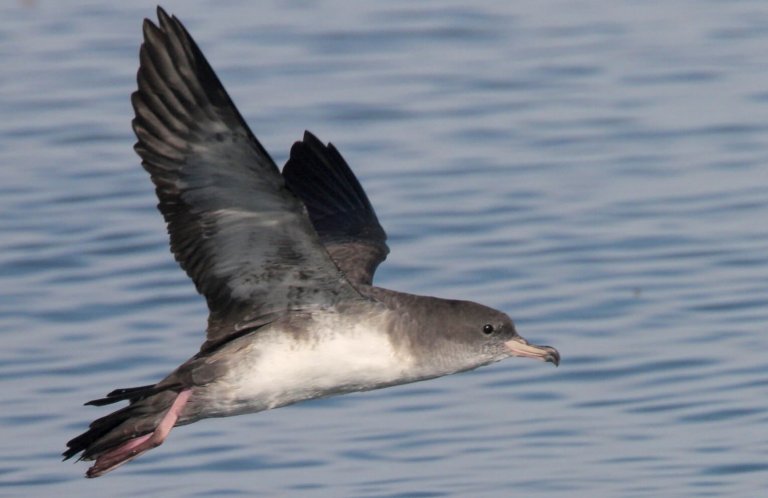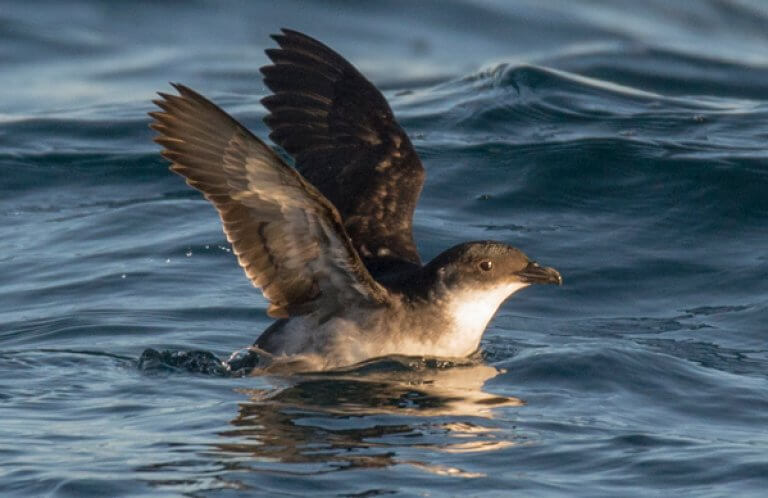About the Black-vented Shearwater
The Black-vented Shearwater, found nesting only along the sweeping Baja California Peninsula of Mexico, sticks closer to the coast than other seabirds – usually within 15 miles of shore. Flocks of Black-vented Shearwaters can sometimes even be seen from land.
This small shearwater is named for its dark vent, the feathered area under its tail that covers the bird's cloaca. This feature distinguishes it from white-vented relatives such as the Townsend's and Newell's Shearwaters.
Once considered a subspecies of Manx Shearwater, the Black-vented Shearwater is now recognized as a separate species.
Practically Pink
The Black-vented Shearwater was separated from the Manx Shearwater based on its appearance, behavior, distribution, and the fossil record. Its smudgy-looking, brown-and-white plumage looks quite different from the black-and-white Manx Shearwater's, and more closely resembles that of the Pink-footed Shearwater, a larger relative which breeds much further south, on a few small islands off the coast of Chile.
Songs and Sounds of the Black-vented Shearwater
The Black-vented Shearwater's raspy calls are mostly heard on its breeding islands during the darkest nights. These vocalizations aid in recognition, courtship, and pair-bond maintenance.
Listen to a group of Black-vented Shearwaters calling here.
Black-vented Shearwater Breeding and Feeding
Like the Peruvian Diving-petrel, Black-capped Petrel, and many other seabirds, the Black-vented Shearwater comes to land only to breed, traveling to and from colonies under the cover of darkness. Mated pairs dig nest burrows in loose, sandy soil using their beaks and feet, or claim a deep rock crevice as a nesting site. Their clutch consists of a single egg, which both parents take turns incubating. After hatching, the chick is fed regurgitated fish until it fledges.

The Black-vented Shearwater feeds relatively close to the shore, where it forages by diving from the surface or just above the water to depths over 60 feet, where it swims with partly folded wings in pursuit of small fish such as anchovies and sardines, and squid, which it swallows whole. (Watch an ABC video on seabird foraging techniques here.)
Black-vented Shearwater Region and Range
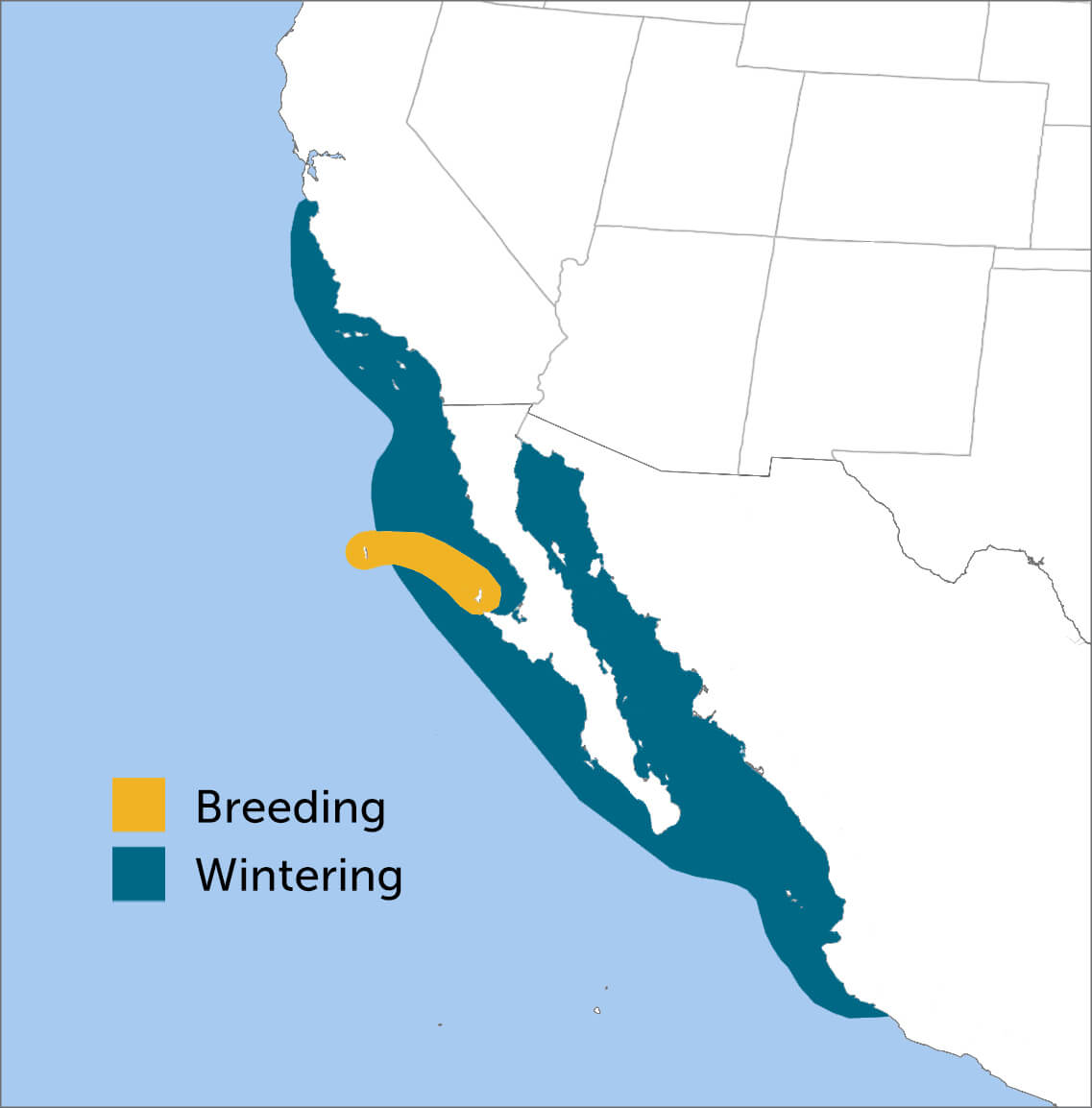
The Black-vented Shearwater breeds on small islands off the west coast of Mexico, mostly on Isla Natividad off Baja California Sur, where over 90 percent of the population nests. Smaller numbers breed on Isla Guadalupe and Islas San Benito off Baja California, and Isla Rasa in the Gulf of California. During the winter, it disperses along the coast of Baja California and as far north as central California in the United States.
Conservation of the Black-vented Shearwater
The Black-vented Shearwater is listed as Near Threatened by the International Union for Conservation of Nature (IUCN) Red List. Its numbers were once decimated by introduced mammals on their nesting islands; feral cats alone were killing over 1,000 Black-vented Shearwaters on Natividad Island each month! Thanks to the efforts of ABC partners Grupo de Ecología y Conservación de Islas, AC (GECI) and Island Conservation, cats have been completely removed from Natividad Island and are being removed from Guadalupe, and Black-vented Shearwater nesting success is improving.
The Black-vented Shearwater's near-shore distribution overlaps with areas of human use, creating ongoing mortality risks from collisions, entanglement in fishing nets, and marine pollution. Its small range also puts it at risk from a single catastrophic event such as a large oil spill.
ABC is working to mitigate many of these threats through its Seabird Program, particularly its fisheries projects, which encourage new technologies, policy changes, and consumer action.
Get Involved
Policies enacted by the U.S. Congress and federal agencies have a huge impact on seabirds. You can help shape these rules for the better by telling lawmakers to prioritize birds and bird-friendly measures. To get started, visit ABC's Action Center.
Plastics pose a deadly threat to seabirds around the world. You can help seabirds by reducing your daily use of plastics. To learn more and get started, visit our Plastics page.
American Bird Conservancy and partners are creating predator-free nest sites for vulnerable seabird species, reducing fishery impacts, and much more. This is a monumental undertaking, requiring the support of many, and you can help by making a gift today.





































